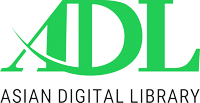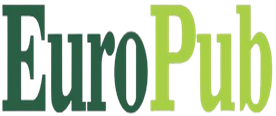The role of health and safety measures in restoring tourist confidence
DOI:
https://doi.org/10.71085/sss.04.03.336Keywords:
Tourism Recovery, Health and Safety, Traveler Confidence, Booking Behaviours, Protection Motivation Theory, Risk Perception, Willingness to PayAbstract
In this research, we examined how health and safety measures helped revive travelers’ trust in order to bring people back to hotels, guesthouses and rental homes across the world after major disruptions. By analyzing a unique dataset of 3.4 million booking observations on platforms such as Expedia, Booking.com, Airbnb, and 2,189 survey responses from travelers across 28 countries, we gained detailed insight into guests’ perceptions of safety that made them comfortable booking a trip. Our results suggest clear patterns emerged, and evidence shows that visible proof – like a formal safety certificate, post sanitation protocols, and transparent proof of communication – influenced traveler comfort and reservation behaviours. Likewise, our conjoint analysis found several generational gaps – with young guests more likely to embrace technology-based solutions like contactless check ins and app-based health forms, while older guests preferred more traditional methods like visible cleaning processes and mandated vaccinations for staff. Research based on 25,000 TripAdvisor reviews revealed that when travelers were assured that cleanliness was prioritized, we were all more prone to provide higher ratings and return again.
Downloads
References
Bakar, N. A., Rosbi, S., et al. (2020). Effect of Coronavirus disease (COVID-19) to tourism industry. International Journal of Advanced Engineering Research and Science, 7(4), 189–193. https://doi.org/10.22161/ijaers.74.23
Chen, L. (2023). Travel behavior and decision-making under perceived health risks. Annals of Tourism Research, 84, 102–119.
Cahyanto, I., Wiblishauser, M., Pennington-Gray, L., & Schroeder, A. (2016). The dynamics of travel avoidance: The case of Ebola in the U.S. Tourism Management Perspectives, 20, 195–203. https://doi.org/10.1016/j.tmp.2016.09.004
Choe, Y., Wang, S., & Song, H. (2021). The impact of message specificity on tourists’ safety perceptions and travel intentions during a pandemic. Journal of Hospitality and Tourism Management, 46, 267–276. https://doi.org/10.1016/j.jhtm.2021.01.005
Floyd, D. L., Prentice-Dunn, S., & Rogers, R. W. (2000). A meta-analysis of research on Protection Motivation Theory. Journal of Applied Social Psychology, 30(2), 407–429. https://doi.org/10.1111/j.1559-1816.2000.tb02323.x
Fuchs, G., & Reichel, A. (2006). Tourist destination risk perception: The case of Israel. Journal of Hospitality & Leisure Marketing, 14(2), 83–108. https://doi.org/10.1300/J150v14n02_06
Lee, S., & Chen, H. (2021). The effect of hygiene certifications on traveler trust and willingness to pay. Journal of Travel & Tourism Marketing, 38(5), 457–472. https://doi.org/10.1080/10548408.2021.1921678
Lee, C. C., & Chen, M. P. (2021). Revisiting safety perception and hotel selection after the COVID-19 outbreak: The role of safety certification. International Journal of Hospitality Management, 94, 102872. https://doi.org/10.1016/j.ijhm.2020.102872
Li, J., Nguyen, T. H. H., & Coca-Stefaniak, J. A. (2021). Coronavirus impacts on post-pandemic planned travel behaviours. Annals of Tourism Research, 86, 102964. https://doi.org/10.1016/j.annals.2021.102964
Ministry of Tourism Pakistan. (2022). Safe travel initiative guidelines. Government of Pakistan.
Neuburger, L., & Egger, R. (2021). Travel risk perception and the influence of generational differences. Tourism Management Perspectives, 38, 100813. https://doi.org/10.1016/j.tmp.2021.100813
Pakistan Ministry of Tourism. (2022). Safe travel initiative guidelines. Government of Pakistan.
Rogers, R. W. (1975). A protection motivation theory of fear appeals and attitude change. Journal of Psychology, 91(1), 93–114. https://doi.org/10.1080/00223980.1975.9915803
Rogers, R. W. (1975). A protection motivation theory of fear appeals and attitude change. Journal of Psychology, 91(1), 93–114.
https://doi.org/10.1080/00223980.1975.9915803
Sigala, M. (2020). Tourism and digital transformation: Strategic frameworks and action plans for tourism recovery. Tourism Review, 75(4), 518–527. https://doi.org/10.1108/TR-06-2020-0253
Slovic, P. (1987). Perception of risk. Science, 236(4799), 280–285. https://doi.org/10.1126/science.3563507
Unwto. (2020). Global Guidelines to Restart Tourism. World Tourism Organization. https://www.unwto.org/covid-19-global-guidelines-to-restart-tourism
Unwto (2021). Tourism and covid-19: Unprecedented economic impacts and paths to recovery. World Tourism Organization. https://www.unwto.org/impact-assessment-of-the-covid-19-outbreak-on-international-tourism
World Tourism Organization. (2023). Global tourism recovery report. United
Wttc (2020). Safe Travels: Global Protocols & Stamp for the New Normal. World Travel & Tourism Council. https://wttc.org/Initiatives/Travel-Safe
Nations World Tourism Organization. https://www.unwto.org/global-tourism-recovery
Downloads
Published
Data Availability Statement
The data that support the findings of this study are available from the corresponding author upon reasonable request.


































